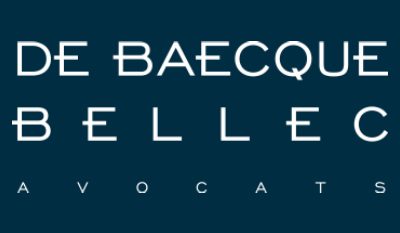Class 35 trademark registration: should you file for retail services or advertising?

Selecting the appropriate classes and drafting precise specifications are the cornerstones of successful trademark registration. Certain formulations in the Nice Classification are a great concern to many businesses. A particularly common inquiry concerns the necessity of protecting Class 35 for the retail sale of products. This comprehensive guide clarifies these issues and provides authoritative legal […]
Trademark opposition in the wine sector
Opposition to trademark registration in France must be filed within two months of publication of the trademark application, as established by Article L712-4 of the French Intellectual Property Code. Opposition in the wine sector A trademark application for ALEXANDRINE CHEVIGNY ROUSSEAU was published at the French National Institute of Industrial Property (INPI). The owner of […]
How to file an international trademark
Protecting a trademark internationally is essential in today’s globalized marketplace. To obtain extended trademark protection, several options are available: country-by-country filing, registration of a European Union trademark or other regional groupings, or filing an international trademark. Filing an international trademark involves a single application form, but protection or refusal occurs individually for each designated country. […]
Trademark law firm: comprehensive protection and management of brands
In today’s competitive and fast-paced marketplace, your brand is one of your most valuable assets. A distinctive trademark not only sets your business apart but also protects your reputation and customer trust. Our international trademark law firm provides comprehensive legal services to secure, monitor, and defend your trademarks worldwide. Whether you’re a start-up building a […]
Olivier de Baecque attends the international conference “Catalogues raisonnés: past, present, future”
The Drouot Group is organizing an international conference in partnership with the newly created Société Internationale des Catalogues Raisonnées (CRIS). Several panels will bring together 17 French and international specialists around the theme “Catalogues Raisonnés: Past, Present, Future.” Olivier de Baecque will attend a legal discussion to deal with the contributions and relevance of catalogues […]
The geographical indication Basque linen is approved
A geographical indication (GI) is protected without requiring that the raw materials come from the geographical area. The protection is based on specific know-how and a reputation for quality. The Bordeaux Court of Appeals follows the line of the Court of Cassation on geographical indications. In the GI LINGE BASQUE, it applied the same principles […]
Trademark coexistence agreement: conditions of validity
Trademark coexistence agreement: conditions of validity The Paris Court of Appeal has ruled on the respect of a coexistence agreement between trademarks. Such an agreement has the value of a transaction within the meaning of article 2044 of the Civil Code, even if it is formalized by a simple exchange of letters. Legal nature of […]
The OAPI to protect trademarks in Africa
The OAPI to protect trademarks in Africa Trademark law is governed by the principle of territoriality: one country, one trademark right. The more companies orient their commercial activities internationally, the greater the need for protection. In addition to mechanisms such as the Madrid system of international trademarks (WIPO), there are regional groupings. Thus, some African […]
Renowned figurative trademark: the Rolling Stones’ emblem assimilated to the rock band
Renowned figurative trademark: the Rolling Stones’ emblem assimilated to the rock band The logo in the shape of a red mouth sticking out its tongue of the group Rolling Stones is examined by the judicial court of Paris. In a decision dated February 25, 2021, the court accepts that this logo is a reputed trademark […]
Olivier de Baecque, lawyer of the year in art law, according to Best Lawyers®
The American Best Lawyers® guide has been unveiling its list of the best lawyers in many countries every year for 40 years. In France, Olivier de Baecque is recognized by his peers as the lawyer of the year 2022 for his expertise in art law. A single professional is awarded the title of lawyer of […]
